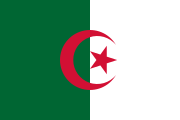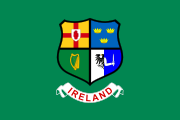Commons:Threshold of originality
Shortcuts: COM:TO • COM:TOO • COM:THRESHOLD
The threshold of originality is a concept in copyright law that is used to assess whether or not a particular work, or a portion of it, can be copyrighted. It is used to distinguish works that are sufficiently original to warrant copyright protection from those that are not. In this context, "originality" refers to "coming from someone as the originator/author" (insofar as it somehow reflects the author's personality), rather than "never having occurred or existed before" (which would amount to the protection of something new, as in patent protection).
As a rule, copyright applies to a work as a whole. If a work contains a portion that is complex enough to receive copyright protection, then the whole work is considered to be copyrighted. One cannot upload said work to Commons by applying de minimis to the non-trivial portion.
The remainder of this page discusses images judged ineligible for copyright protection by a court or similar authority. It is usually impossible to determine whether a specific image is within the threshold of originality without a judicial decision. However, per precautionary principle, the image should be deleted if there is significant doubt that the image is not copyrighted.
For further information, see Threshold of originality on Wikipedia.

Map
- [This illustration is not explained enough. You may edit the page to make it clearer.]
COM:TOO United States
Commons:Copyright rules by territory/United States/en
Civil law countries
Civil law countries usually require a relatively high minimum level of intellectual creativity which will exclude typical signatures and simple logos from copyright protection. However, this does not apply to all such countries. For example, Austria and China are both known to have a relatively low threshold of originality, while a few simple logos from the Philippines gained copyright registrations from the country's Intellectual Property Office.
If you are aware of specific case law or legal advice on this issue in any country, please add a "Threshold of originality" section to the appropriate Commons:Copyright rules by territory country subpage, and add a link to it with an entry below.
COM:TOO Afghanistan
Afghanistan
Commons:Copyright rules by territory/Afghanistan/en
COM:TOO Argentina
Argentina
Commons:Copyright rules by territory/Argentina/en
COM:TOO Austria
Austria
Commons:Copyright rules by territory/Austria/en
COM:TOO Brazil
Brazil
Commons:Copyright rules by territory/Brazil/en
COM:TOO Czech Republic
Czech Republic
Commons:Copyright rules by territory/Czech Republic/en
COM:TOO Chile
Chile
Commons:Copyright rules by territory/Chile/en
COM:TOO China
China
Commons:Copyright rules by territory/China/en
COM:TOO Denmark
Denmark
Commons:Copyright rules by territory/Denmark/en
COM:TOO Ecuador
Ecuador
Commons:Copyright rules by territory/Ecuador/en
COM:TOO Finland
Finland
Commons:Copyright rules by territory/Finland/en
COM:TOO France
France
Commons:Copyright rules by territory/France/en
COM:TOO Germany
Germany
Commons:Copyright rules by territory/Germany/en
COM:TOO Greece
Greece
Commons:Copyright rules by territory/Greece/en
COM:TOO Hungary
Hungary
Commons:Copyright rules by territory/Hungary/en
COM:TOO Indonesia
Indonesia
Commons:Copyright rules by territory/Indonesia/en
COM:TOO Iran
Iran
Commons:Copyright rules by territory/Iran/en
COM:TOO Italy
Italy
Commons:Copyright rules by territory/Italy/en
COM:TOO Japan
Japan
Commons:Copyright rules by territory/Japan/en
COM:TOO Libya
Libya
Commons:Copyright rules by territory/Libya/en
COM:TOO Luxembourg
Luxembourg
Commons:Copyright rules by territory/Luxembourg/en
COM:TOO Mexico
Mexico
Commons:Copyright rules by territory/Mexico/en
COM:TOO Netherlands
Netherlands
Commons:Copyright rules by territory/Netherlands/en
COM:TOO Norway
Norway
Commons:Copyright rules by territory/Norway/en
COM:TOO Peru
Peru
Commons:Copyright rules by territory/Peru/en
COM:TOO Philippines
Philippines
Commons:Copyright rules by territory/Philippines/en
COM:TOO Poland
Poland
Commons:Copyright rules by territory/Poland/en
COM:TOO Portugal
Portugal
Commons:Copyright rules by territory/Portugal/en
COM:TOO Russia
Russia
Commons:Copyright rules by territory/Russia/en
COM:TOO Senegal
Senegal
Commons:Copyright rules by territory/Senegal/en
COM:TOO Slovenia
Slovenia
Commons:Copyright rules by territory/Slovenia/en
COM:TOO South Korea
South Korea
Commons:Copyright rules by territory/South Korea/en
COM:TOO Spain
Spain
Commons:Copyright rules by territory/Spain/en
COM:TOO Sweden
Sweden
Commons:Copyright rules by territory/Sweden/en
COM:TOO Switzerland
Switzerland
Commons:Copyright rules by territory/Switzerland/en
COM:TOO Taiwan
Taiwan
Commons:Copyright rules by territory/Taiwan/en
COM:TOO Turkey
Turkey
Commons:Copyright rules by territory/Turkey/en
Common law countries
Common law countries typically use a "skill and labour" test to determine the minimum level of originality capable of attracting copyright protection. The required level is extremely low in some countries such as Australia and the United Kingdom. However, Canada and India are major two exceptions. Without some research into individual laws, it cannot be assumed that a text logo from a Common law country is necessarily allowed on Commons. If there is real doubt about the position a local court would take, then the image must be deleted under the precautionary principle.
If the logo is extremely simple (e.g. in a standard font), it will not be eligible for copyright even in Common law countries.
If you are aware of specific case law or legal advice on this issue in any country, please add a "Threshold of originality" section to the appropriate Commons:Copyright rules by territory country subpage, and add a link to it with an entry below.
COM:TOO Australia
Australia
No information available
COM:TOO Canada
Canada
Commons:Copyright rules by territory/Canada/en
COM:TOO Hong Kong
Hong Kong
Commons:Copyright rules by territory/Hong Kong/en
COM:TOO India
India
Commons:Copyright rules by territory/India/en
COM:TOO Ireland
Ireland
Commons:Copyright rules by territory/Ireland/en
COM:TOO Israel
Israel
Commons:Copyright rules by territory/Israel/en
COM:TOO Malaysia
Malaysia
Commons:Copyright rules by territory/Malaysia/en
COM:TOO Nigeria
Nigeria
Commons:Copyright rules by territory/Nigeria/en
COM:TOO New Zealand
New Zealand
Commons:Copyright rules by territory/New Zealand/en
COM:TOO Singapore
Singapore
Commons:Copyright rules by territory/Singapore/en
COM:TOO United Kingdom
United Kingdom
Commons:Copyright rules by territory/United Kingdom/en
Logos and flags
- The logos in these images may *not* be eligible for copyright protection
-
claimed not to reach the threshold
-
claimed not to reach the threshold
-
(DR)
-
(DR) "PD text logo -- no question"
-
(Australian company logo DR) "PD-textlogo"
-
(Canada company logo DR) "PD-textlogo"
-
(DR)
-
(DR)
-
(DR)
-
(DR)
- File:Hercules 1998 Intertitle.png originally "background isn't elaborate or eligible for any type of copyright" (decided here in 2010), deleted in 2012 as "shows artistry beyond the TOO".
Flags
Whether a flag is eligible for copyright protection depends on the country it was made in, and whether it was made by (or for) an official government. While some governments release their intellectual creations as public domain, this is not universally the case. Note that municipal-level governments often follow different rules from national/state governments with regard to intellectual property.
Governmental flags
Some governments, like the United States, do not claim copyright over their official flags. Note this is not universal. For example, in Canada, official flags made or commissioned by federal/provincial governments would fall under Crown copyright and enter the public domain after 50 years[123].
Note that flags created or commissioned by municipal governments do not necessarily follow the same rules as state, provincial, national, or federal governments. Continuing with Canada as an example: municipalities are not eligible for Crown copyright, and municipal flags are treated like flags made by private organizations/individuals[123]. Municipalities in the USA are able to copyright their flags.
Examples of municipal flags which have been deleted from Commons as copyright violations include:
- USA: The city of Pocatello, Idaho successfully copyrighted their 2001 flag; see w:Flag of Pocatello, Idaho.
- USA: Chapmanville, West Virginia holds copyright over their flag, and was deleted from Commons as a result.
- USA: Seattle, Washington holds copyright over their flag and was also deleted from Commons.
- Canada: Although it has a fairly simple design, the flag of Calgary, Alberta is considered copyrighted and was deleted from Commons twice. The stylized stetson hat is considered copyrightable.
- Slovenia: numerous municipal flags from Slovenia have been deleted from Commons as they are copyrighted.
Official flags created by Indigenous governments can also be copyrighted. Examples of official flags of tribal governments which have been deleted from Commons include:
- The Rosebud Sioux Tribe. Their flag is a registered copyright in the USA and was speedily deleted from Commons. The stylized teepees are above Threshold of Originality in the USA.
- The Peoria Tribe. Their emblem is a registered copyright in the USA. Their flag features this emblem, and so was speedily deleted. Drawings of feathers are above Threshold of Originality in the USA.
- The Shawnee Nation. Their flag is registered copyright in the USA and was also speedily deleted from Commons. The oak leaves are above Threshold of Originality in the USA.
- The Lumbee Tribe. Their seal is registered copyright in the USA, also resulting in a speedy deletion. Their flag features the seal, and was also speedily deleted. The pattern of overlapping triangles around the edge of the medicine wheel appears to be why this is above Threshold of Originality in the USA.
Examples of official flags which Commons discussions have deemed ineligible for copyright protection include:
-
The Sri Lankan flag was kept after being nominated for deletion, as the lion design was not new and everything else was basic shapes.
-
The Algerian flag was kept on basis of Threshold of Originality (TOO).
-
The flag of Mesa, Arizona was kept on basis of TOO.
-
The personal flag of Queen Elizabeth II was kept as the blazon is not copyrighted. For more on coats of arms see Commons:Coats of arms.
Flags by private individuals or organizations
Flags which are created by non-governmental entities (e.g. private individuals, advocacy organizations, corporations) can be thought of as logos in terms of copyright. Whether such flags are copyright eligible will thus follow the standards for Threshold of Originality of the country it was made in. A clear example of a widely-adopted flag that is too visually complex to be understood as "simple geometry" is The Survivors' Flag by the National Centre for Truth and Reconciliation (Canada).
A famous example of a copyrighted flag is the Australian Aboriginal flag created in Australia by Harold Thomas in 1971[124] The Australian government acquired the copyright to the flag in 2022, allowing for free usage (see w:Australian_Aboriginal_flag#Copyright).
Examples of flags deleted from Commons as copyright violations include:
- The ASEAN flag was deleted for being copyrighted. It had been uploaded as "simple geometry" but determined to be copyrightable in Indonesia.
- This 2005 Coptic Flag was deleted from Commons for being copyrighted. Its centre element is visually complex.
- The "Mexican Deseret" flag on the second page of this linked forum thread was deleted from Commons as a copyright violation. The eagle design is too complex to be "simple geometry".
- This Proposed Svalbard Flag was deleted; its artwork is also considered complex.
- The Cascadian Flag was deleted for being copyrighted: the tree design is considered complex.
- The Hezbollah flag was deleted on the grounds it is too complex and thus copyrightable.
- This Flag of Popular Mobilization Forces was deleted for being copyrighted.
-
The Australian Aboriginal Flag, created by a private Australian citizen, was deleted from Commons because of how it was copyrighted at the time. (A similar design in the United States would likely not have been eligible for copyright protection, for being simple geometry.)
-
This lesbian flag, previously nominated for deletion, was determined to be too simple for copyright protection (USA jurisdiction).
-
The Free Speech Flag was kept as copyright ineligible (USA jurisdiction).
-
This unofficial Palmyra Atoll flag was deemed simple geometry (USA jurisdiction).
-
The Tino Rangatiratanga Maori sovereignty movement flag was kept on the basis of basic geometry (New Zealand jurisdiction).
-
The Ryukyu independence flag was kept on the grounds it is simple geometry (Japanese jurisdiction).
-
This Irish hockey team flag, previously nominated for deletion, was kept on the grounds it had "no real copyrightable creativity". All of the elements in the flag are public domain (Irish jurisdiction).
-
This Irish cricket flag was kept on the grounds the shamrock cannot be copyrighted (Irish jurisdiction).
Architecture
Images which have been kept because of lack of originality or de minimis:
Note that some of these decisions were controversial.
Photographs
Photographs which have been deemed ineligible for copyright protection:
-
(DR) Photograph of a three-dimensional object (drawer pull) with bevels and cast shadows
Maps
Maps which have been deemed ineligible for copyright protection:

Darden v. Peters: the addition of "font and color selection; visual effects such as relief, shadowing, and shading; labeling; call-outs" and anti-aliasing to a preexisting map is below the threshold of originality
Use: {{PD-map}}. See the section farther down on partial copying or cropping of uncopyrightable elements from copyrighted works. See also:
- Commons:Map resources and its sections on public domain maps on the web.
- Open.Michigan Wiki. Casebook archive on "whether or not the content object is protected by US Copyright law.". Opening in the maps section. Data-driven maps in particular are in the public domain. The map represents data. All choices made in the creation of the map being based upon utilitarian and informational considerations. See also: Commons talk:Threshold of originality/Archive 2#Casebook. More locations. See this University of Michigan Casebook archive here. It loads much faster than the Casebook at archive.org.
- Public domain maps. From: Public Domain Sherpa. A copyright and trademark lawyer.
- Category:PD map
Charts
Charts which have been deemed ineligible for copyright protection. Use: {{PD-chart}}. See the section farther down on partial copying or cropping of uncopyrightable elements from copyrighted works. See also:
- Commons:Chart and graph resources and its section on public domain charts on the web.
- Open.Michigan Wiki. Casebook archive on "whether or not the content object is protected by US Copyright law.". Opening in the charts section. See also: Commons talk:Threshold of originality/Archive 2#Casebook. More locations. See this University of Michigan Casebook archive here. It loads much faster than the Casebook at archive.org.
- Category:PD chart
-
See discussion.
-
See the info in the author section of the file description.
-
See the deletion discussion, and this discussion.
-
See the deletion discussion.
-
See the deletion discussion.
Partial copying or cropping of copyrighted works
When a file copies only part of a copyrighted work, that file's copyright status is determined only by what it has copied. If it only copied uncopyrightable elements, then the file is also uncopyrightable. In other words, we judge the copyright status of a file only by what the file itself contains, not by the status of other content the original source contained that was not copied by the file.
 |
This image of the front cover of a novel is public domain in the USA because it only copies uncopyrightable text, not copyrightable contents of the book itself or possibly-copyrightable contents of the back cover. (DR) It would probably not be PD in UK because of the UK's publisher's 25 year copyright on typography, except for the fact that this typographical arrangement was published over 25 years ago. |
Lower threshold in United Kingdom etc.
- File:BBC.svg and many associated variants for BBC divisions were kept, because they only contain Gill Sans, which is an old, standard font.
See Commons:Deletion requests/File:BBC.svg. - File:Clerical Medical.png (uploaded as PD-ineligible-USonly on en.wikipedia.org)
See Commons:Deletion requests/File:Clerical Medical.png (with reasoning of the EDGE logo).
See also
- {{Licensed-TOO}} template for formatting and internationalization of licenses of TOO images
- Commons:Copyright rules by subject matter
- Category:Threshold of originality related deletion requests
- Commons:When to use the PD-scan tag - on the level of originality needed for a scan of a work to generate a copyright independent of the work
- Commons:When to use the PD-Art tag - on the level of originality needed for a photo of a work to generate a copyright independent of the work
- meta:Wikilegal/Copyright threshold of originality for logos
- Category: PD-ineligible license tags
- Category: PD ineligible
- Commons:Chart and graph resources. Including other public domain resources.
- Commons:Map resources. Including other public domain resources.
References
Some citation text may not have been transcluded
|
|---|
|
For more complete, working references see Commons:Copyright rules by territory and the individual countries and territories:






.svg/120px-Logo_of_the_LG_Corporation_(1995-2014).svg.png)







.svg/180px-Flag_of_Palmyra_Atoll_(local).svg.png)















